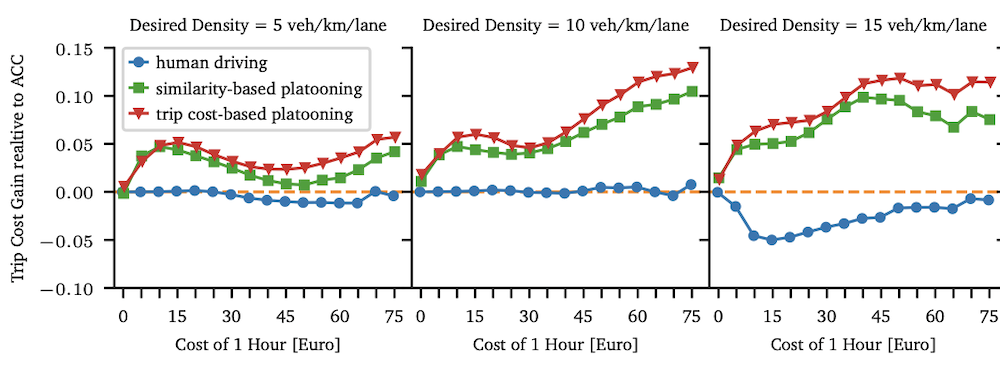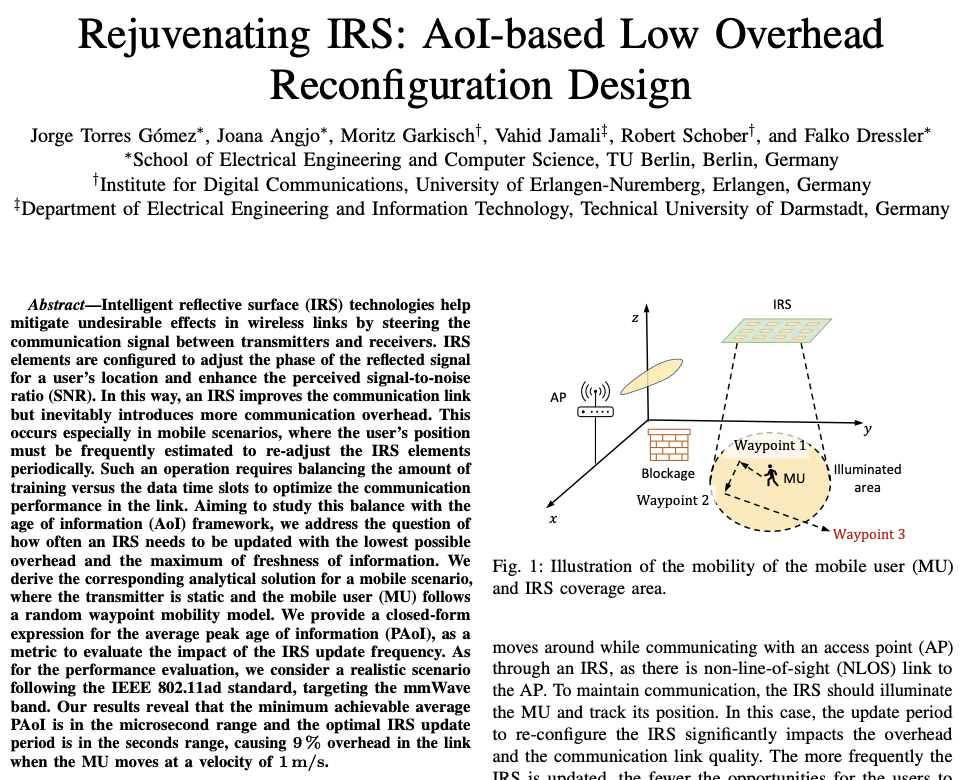Literature Database Entry
hofmann2022testbed
Pit Hofmann, Jorge Torres Gómez, Falko Dressler and Frank H. P. Fitzek, "Testbed-based Receiver Optimization for SISO Molecular Communication Channels," Proceedings of 5th IEEE International Balkan Conference Communications and Networking (BalkanCom 2022), Sarajevo, Bosnia and Herzegovina, August 2022, pp. 120–125.
Abstract
When conceiving molecular communication (MC) systems, it is of utmost importance to determine the threshold value for decoding bits and producing the less bit error rate (BER). At this optimum, the BER has the smallest amount, and errors in the reception can be minimized, thereby improving the minimal throughput of molecular means. Despite its importance, prior research still presents little applicability and insights obtaining of the optimal threshold for real testbeds. Filling this gap, in this paper, we feature a low-complex algorithm for the optimal threshold in single-input single-output (SISO) testbeds. Using a cross-correlation method, we assess a threshold close to the optimal, where the BER results are close to the minimum achievable.
Quick access
Original Version ![]() (at publishers web site)
(at publishers web site)
Authors' Version ![]() (PDF on this web site)
(PDF on this web site)
BibTeX ![]()
Contact
Pit Hofmann
Jorge Torres Gómez
Falko Dressler
Frank H. P. Fitzek
BibTeX reference
@inproceedings{hofmann2022testbed,
author = {Hofmann, Pit and Torres G{\'{o}}mez, Jorge and Dressler, Falko and Fitzek, Frank H. P.},
doi = {10.1109/BalkanCom55633.2022.9900720},
title = {{Testbed-based Receiver Optimization for SISO Molecular Communication Channels}},
pages = {120--125},
publisher = {IEEE},
isbn = {978-1-66548-764-1},
address = {Sarajevo, Bosnia and Herzegovina},
booktitle = {5th IEEE International Balkan Conference Communications and Networking (BalkanCom 2022)},
month = {8},
year = {2022},
}
Copyright notice
Links to final or draft versions of papers are presented here to ensure timely dissemination of scholarly and technical work. Copyright and all rights therein are retained by authors or by other copyright holders. All persons copying this information are expected to adhere to the terms and constraints invoked by each author's copyright. In most cases, these works may not be reposted or distributed for commercial purposes without the explicit permission of the copyright holder.
The following applies to all papers listed above that have IEEE copyrights: Personal use of this material is permitted. However, permission to reprint/republish this material for advertising or promotional purposes or for creating new collective works for resale or redistribution to servers or lists, or to reuse any copyrighted component of this work in other works must be obtained from the IEEE.
The following applies to all papers listed above that are in submission to IEEE conference/workshop proceedings or journals: This work has been submitted to the IEEE for possible publication. Copyright may be transferred without notice, after which this version may no longer be accessible.
The following applies to all papers listed above that have ACM copyrights: ACM COPYRIGHT NOTICE. Permission to make digital or hard copies of part or all of this work for personal or classroom use is granted without fee provided that copies are not made or distributed for profit or commercial advantage and that copies bear this notice and the full citation on the first page. Copyrights for components of this work owned by others than ACM must be honored. Abstracting with credit is permitted. To copy otherwise, to republish, to post on servers, or to redistribute to lists, requires prior specific permission and/or a fee. Request permissions from Publications Dept., ACM, Inc., fax +1 (212) 869-0481, or permissions@acm.org.
The following applies to all SpringerLink papers listed above that have Springer Science+Business Media copyrights: The original publication is available at www.springerlink.com.
This page was automatically generated using BibDB and bib2web.








